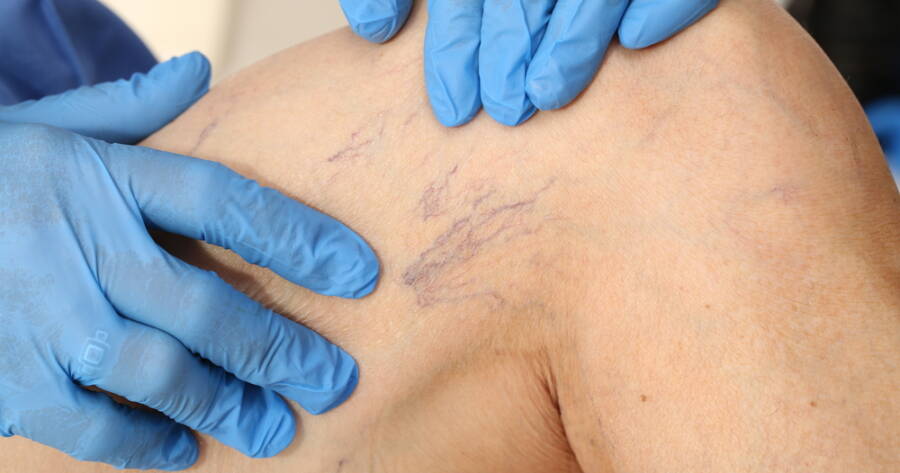Varicose veins are swollen, twisted blood vessels that often appear on the legs. They can be unsightly and uncomfortable, and they can sometimes lead to more serious health problems. Early intervention and proper management can help prevent complications and improve overall vein health.
Varicose Veins: Swollen, Twisted Blood Vessels
Varicose veins develop when the valves within the veins, responsible for transporting blood back to the heart, weaken or sustain damage. Consequently, blood accumulates in the veins, causing them to swell and twist. Several factors contribute to their onset, including age, as they are more prevalent in older adults, and family history, as varicose veins often run in families. Additionally, the increased pressure on the veins during pregnancy commonly leads to their development, while obesity and prolonged periods of standing can also elevate the risk.1
Understanding Causes, Signs, and Symptoms
Varicose veins manifest through various symptoms, which can include aching or pain in the legs, swelling in the legs, itching or burning sensations around the affected veins, skin discoloration, and skin ulcers.2 However, beyond these visible signs, varicose veins can also herald more serious health issues, such as blood clots, deep vein thrombosis (DVT), and pulmonary embolism.
Exploring Treatment Options and Relief
For varicose veins, a variety of treatment options exist, offering relief and restoration. These include:
- Compression stockings: These specialized stockings aid in improving circulation and alleviating leg swelling.
- Sclerotherapy: In this procedure, a solution is injected directly into the veins, inducing their collapse and subsequent sealing.
- Laser therapy: Utilizing heat, laser therapy targets and damages the veins, prompting their collapse and closure.
- Surgery: In cases involving extensive or severely damaged varicose veins, surgical intervention may be warranted to remove them effectively.
Learn More Today!
If you are experiencing any of the symptoms of varicose veins, it is important to see a doctor to get a diagnosis and discuss treatment options. Varicose veins can be a serious health problem, but they can often be treated effectively. Don’t suffer in silence – learn about varicose veins and the treatment options available.
